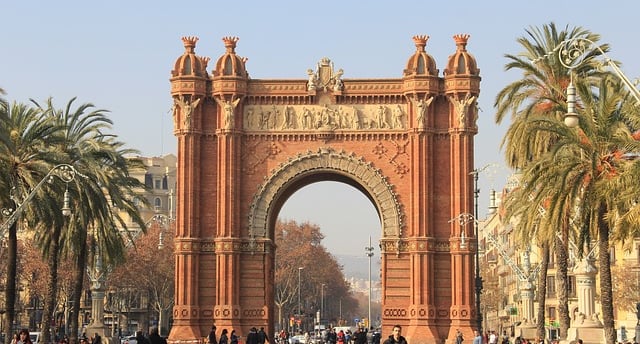Discover Historical Streets Around the World
Explore ten historic streets worldwide, from Edinburgh’s Royal Mile to New Orleans' Bourbon Street. Timeless routes that connect past and present.
admin
10/10/20243 min read


Historical streets serve as silent witnesses to human history, linking the past with the present. These pathways are vital to cities' cultural and traditional narratives, each telling unique stories of joy, struggle, and resilience. This exploration highlights ten notable historical streets, each rich in narrative and allure.
1. The Royal Mile – Edinburgh, Scotland
The Royal Mile is a historic thoroughfare in Edinburgh’s Old Town, connecting Edinburgh Castle to the Palace of Holyroodhouse. This iconic street features historical buildings, museums, and shops that reflect Scotland's vibrant past. Central to life in medieval Scotland, the Royal Mile remains a cultural hub where visitors can explore St. Giles' Cathedral and wander through charming cobblestone alleys, immersing themselves in Scottish heritage.
2. The Champs-Élysées – Paris, France
Renowned as one of the world’s most beautiful avenues, the Champs-Élysées in Paris dates back to the 17th century. Stretching from the Arc de Triomphe to the Place de la Concorde, this street symbolizes French grandeur and has historically hosted military parades and national celebrations, including the famous Bastille Day parade. Today, it is lined with luxury shops and theaters, preserving its status as a symbol of French power.
3. Via Dolorosa – Jerusalem, Israel
The Via Dolorosa, meaning “Way of Sorrow,” is a significant religious route in Jerusalem's Old City, believed to mark the path Jesus Christ walked to his crucifixion. Pilgrims from around the world traverse this street, stopping at the Stations of the Cross to reflect on its sacred history. The Via Dolorosa blends deep religious significance with rich historical context, making it a vital site for spirituality and heritage.
4. Lombard Street – San Francisco, USA
Famous for its steep, winding turns, Lombard Street in San Francisco is one of the most recognizable streets in the United States. Designed in 1922 to alleviate the hill’s steep gradient, this street features a unique zigzag pattern that attracts visitors. Lined with beautiful Victorian homes and manicured gardens, Lombard Street combines historical and architectural charm, making it a must-visit landmark.
5. La Rambla – Barcelona, Spain
La Rambla is Barcelona’s most famous street, drawing millions of visitors each year. Originally a dry riverbed, it transformed into a lively pedestrian promenade filled with street performers, markets, and historical buildings like the Gran Teatre del Liceu. This street played a crucial role in Barcelona’s development as a cultural and trade hub during the medieval period and continues to be an essential aspect of the city’s identity.
6. Beale Street – Memphis, USA
Beale Street in Memphis is synonymous with blues music and African American culture. Emerging as a center for the blues movement in the early 20th century, it featured legendary musicians like B.B. King. Beyond music, Beale Street played a significant role in the civil rights movement, symbolizing both musical heritage and the struggle for equality.
7. The Grand Canal – Venice, Italy
While not a traditional street, the Grand Canal serves as Venice’s main thoroughfare and is crucial to the city's history. This canal winds through Venice, showcasing historic palaces and churches dating back to the 12th century. Gondolas and water taxis traverse its waters, evoking Venice's past as a major maritime power. A journey along the Grand Canal reveals the city's opulent history.
8. Bourbon Street – New Orleans, USA
Bourbon Street, located in New Orleans’ French Quarter, is famed for its vibrant nightlife and rich blend of French, Spanish, and Creole cultures. Named after the French royal family in the early 18th century, it has played a pivotal role in the evolution of jazz music, with numerous venues hosting iconic performances. Bourbon Street's historic architecture and lively atmosphere make it a must-see for music lovers and history enthusiasts alike.
9. Jinli Ancient Street – Chengdu, China
Jinli Ancient Street is a restored pedestrian street in Chengdu, dating back to the Qin Dynasty (221–206 BC). Originally a commercial center, it was revitalized in the early 2000s to highlight its ancient architecture and cultural importance. Visitors can explore tea houses, handicraft shops, and Sichuan opera performances, experiencing the historical charm and vibrant local culture.
10. Flask Walk – London, England
Located in Hampstead, London, Flask Walk is a quaint historic street that offers a glimpse into the past. Named after The Flask pub, which has served patrons since the 17th century, the street is known for its cobblestone pavements, charming shops, and leafy surroundings. Flask Walk reflects Victorian-era London, with many buildings preserving their original architecture.
Conclusion
Historical streets are not just pathways; they are living monuments that embody the spirit of the past. From the winding Lombard Street to the sacred Via Dolorosa, these streets have witnessed pivotal moments in history and culture. Exploring them allows us to appreciate the traditions and experiences that have shaped our world. Whether through architecture, religion, music, or daily life, these streets continue to offer rich narratives of the human journey across time. As we walk these paths today, we honor the legacies they represent and the stories they continue to tell
Explore
Discover
Luxury travel experiences and cultural adventures await you.
© 2024. All rights reserved.
